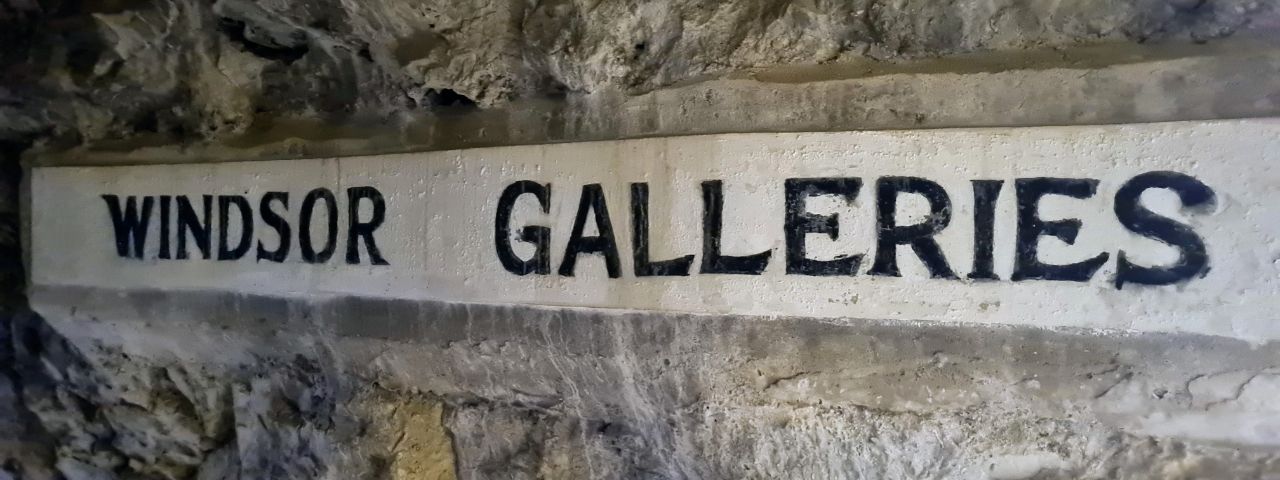In Arabic, Gibraltar is called Jabal Tariq (Tariq’s Mountain) or simply Gib. Or just “The Rock.” Not as bald as Dwayne Johnson, but equally famous. A place guarding the gateway to the Atlantic Ocean. The place where John Lennon and Yoko Ono got married. A place that guards and hides many interesting stories. Let’s talk about them.
We arrived as early as possible to avoid parking problems. We didn’t have much time since our ferry to Morocco was at 7 PM, so we needed to leave Gibraltar around 4 PM. Despite its small size (less than 7 sq. km), Gibraltar requires significant time to explore.
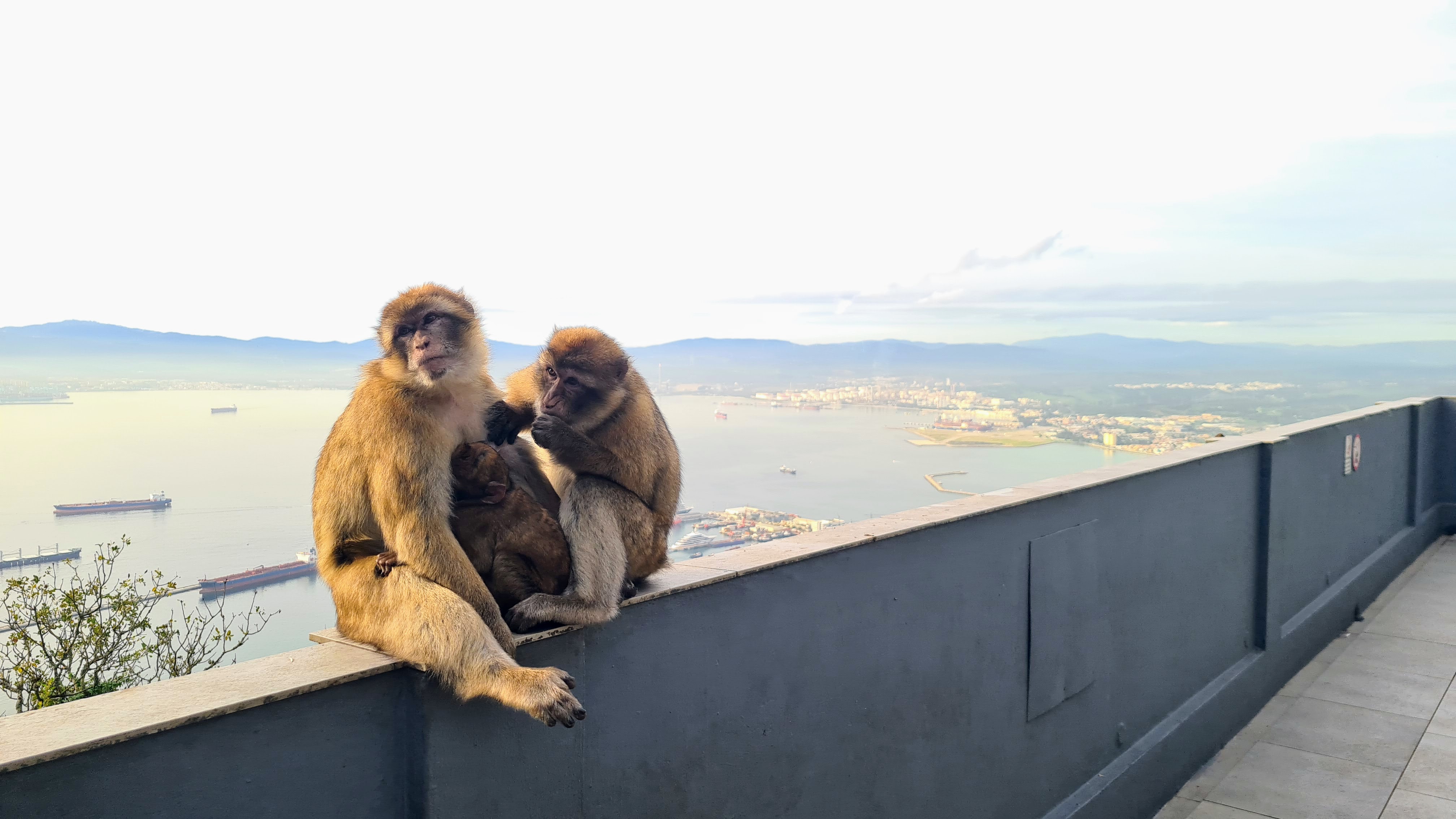
Gibraltar is small and cramped, so parking requires strategy. We chose the lot under the Lathbury Sports Center. Plenty of spaces, though at the highest price of all options – 2.5 GBP per hour. Next time I’d probably park near the cable cars and not worry about finding a spot. There are some free spaces near the cable cars, so if you win the lottery, you might get by cheaply. Park in white spots; yellow ones are for residents only (blocked wheels await), and blue spots are paid. The park opens at 9:00, so I recommend arriving at the parking lot around that time. Right next to the parking lot are the Alameda Gardens – free and cozy if you have time.
Many travelers choose to leave their car on the Spanish side (in La Linea) and cross the border to Gibraltar on foot. La Linea has much cheaper parking options. For example, right near the border or here where you can park for free, and the distance to Gibraltar’s center is just a 15-minute walk.
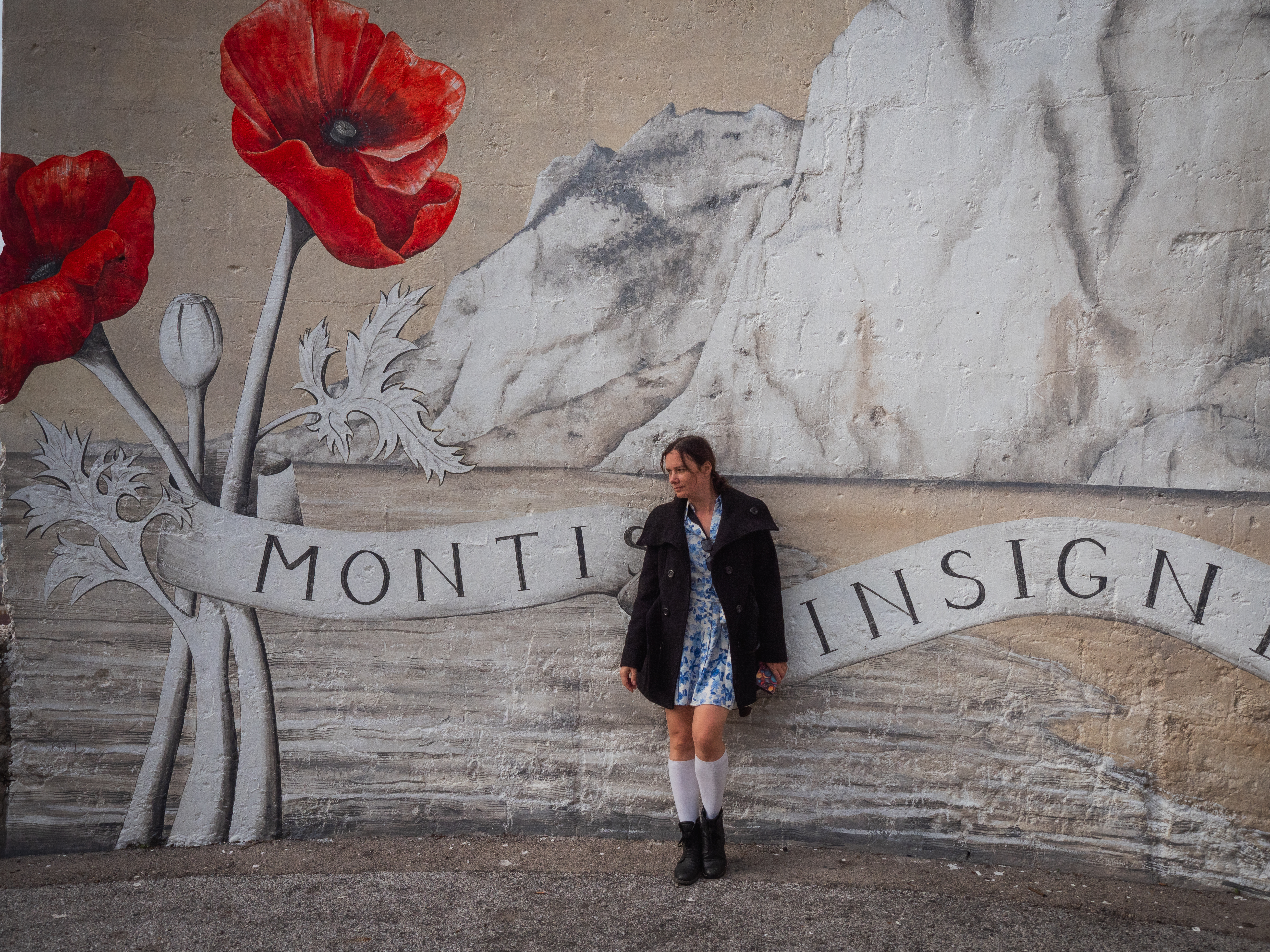
But this time we parked luxuriously. After a few serpentine turns, the entrance to Gibraltar’s nature reserve becomes visible, right next to the Jewish cemetery. At least the benefit of the sports center parking lot is that you’re already partway up the mountain and the entrance is very close. The entrance ticket costs 25 GBP – a bit more than we expected, but for this you get:
- Visit to the Moorish Castle
- Exploration of old and new tunnels
- Access to the viewing platform
- Visit to St. Michael’s Cave
- Special visitor bracelet as a souvenir
Our Gibraltar journey began with St. Michael’s Cave. We chose the direct path to the cave, although those wanting more adventures can try the winding Mediterranean Steps. Inside the cave, several spaces opened up, hung with impressive stalactites and filled with stalagmites. Particularly eye-catching was an angel, made even more angelic with the help of lights. At the end – a visualization telling the story of geological formations over millennia.

Various legends have long surrounded this cave. It was once thought to be a bottomless tunnel connecting Europe and Africa. Written sources even mention that the cave possibly served as a temple of Hercules.
I left the cave smarter: besides the already known stalactites, stalagmites, stalagmites, pearls and curtains, I learned about tubular stalactites/straws and helictites – unique formations that grow chaotically, defying the laws of gravity and looking like my hair in the morning.
After emerging from the cave, we went up to reach the viewing platform. Another bracelet scan. From the platform you can see both the eastern and western sides of Gibraltar, and looking south – the silhouettes of Africa. No wonder, it’s only 14km away by water (since we found the bottom of the cave). However, I don’t recommend swimming for budget travelers. Those 14km of water are quite capricious and have considerable depth. Due to strong currents and challenging weather conditions, the strait can be dangerous, which is why pilots sometimes help ships enter the Mediterranean Sea. Specially trained pilots navigate these dangerous waters to ensure ship safety. The English Channel is more than twice as wide, yet they managed to build a tunnel there. But at the Gibraltar Strait, there’s neither a tunnel nor a bridge.
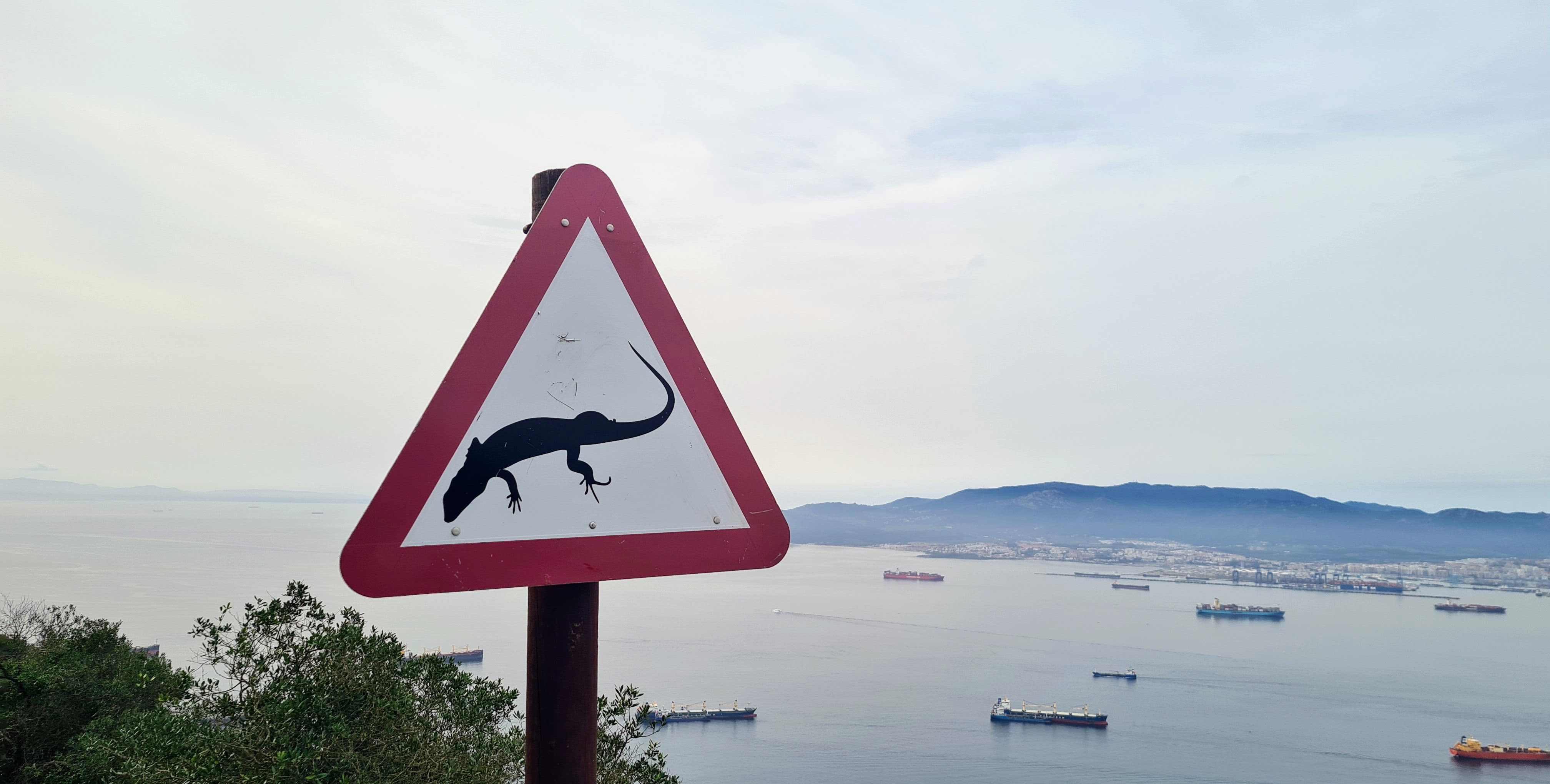
Our third stop was the Barbary macaques, the most popular tourist attraction. These unique primates are the only wild monkeys living freely in Europe. They are usually based near the viewing platform because that’s where their feeding stations are. If there aren’t enough macaques at the feeding stations, you can go down the stairs. Those stairs are narrow, so it was uncomfortable passing one resident who started growling when she saw me from a distance. Feeding the macaques is prohibited, but they often help themselves. We saw several discarded bags that once contained food. I also had to snatch my bag from a macaque’s clutches because I was distracted like a typical tourist.
There are about 200 of these residents in Gibraltar. Seeing their population decline significantly during World War II, Winston Churchill quickly ordered more to be brought from Morocco. Most likely, Winston Churchill believed the legend that as long as Gibraltar has its monkeys, the British will rule here. Later in a café, we read local stories about how the monkeys run around with personal belongings or show up uninvited at the houses to play with the TV remote.
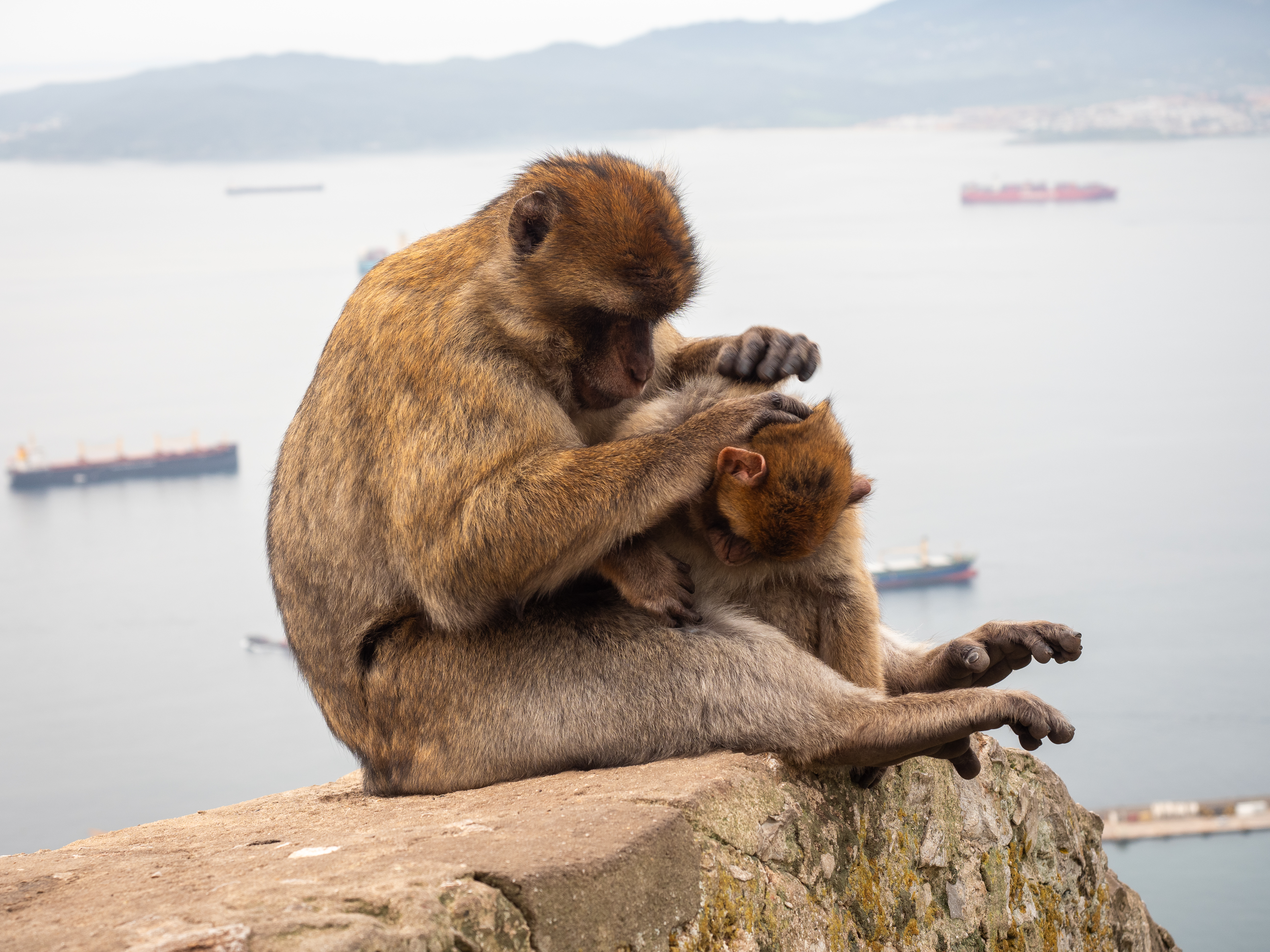
After the macaques, we headed to Gibraltar’s tunnels. We found at least two sets: older ones higher up and World War II ones lower down. We preferred the World War II tunnels. They even managed to hang an airplane in one of the tunnel halls – not just any plane, but the Royal Air Force’s pride, the Spitfire. Its distinctive elliptical wing and innovative structural solutions allowed easier maneuverability and higher speed than many fighters of that time. It was also one of the first aircraft with retractable landing gear, which helped reduce air resistance and increase much-needed speed. The British worked tirelessly throughout World War II and produced over 20,000 of these “hornets.”
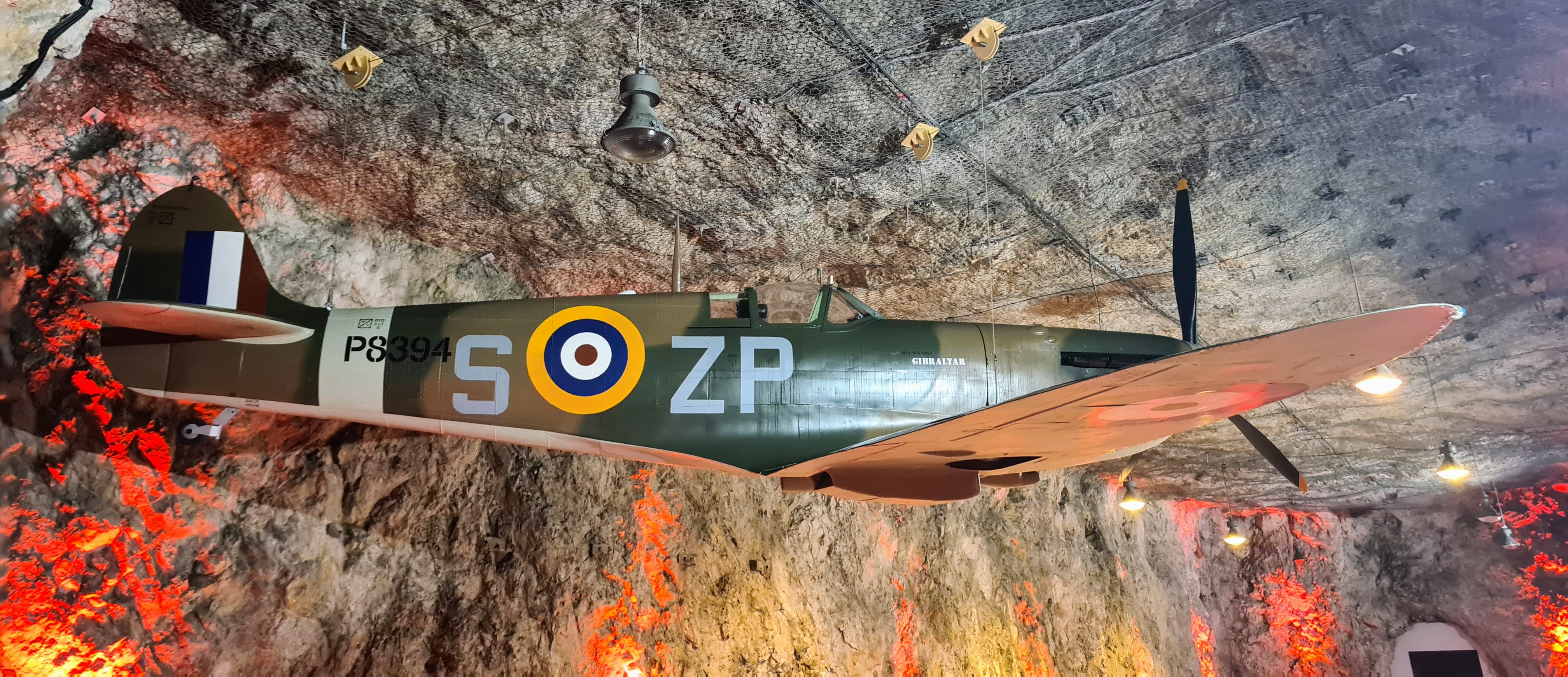
For airplane enthusiasts, there’s another attraction. Gibraltar has a very unusual intersection where a pedestrian path (Winston Churchill Avenue) crosses the airport runway. When a plane takes off or lands, they close the pedestrian path. Watching the whole procedure is fun: clearing people from the runway, one car checking it, and another sweeping the intersection – all to avoid surprises. We were lucky to capture this aviation spectacle from the mountain near the tunnels.
It’s worth mentioning that the entire Gibraltar mountain is like a giant Swiss cheese – it has a tunnel system with a total length of about 50 kilometers, more than twice the local road network. The British worked here for 200 years. And not without reason, as Gibraltar is a strategically important point. Many important confrontations took place here. Good defensive positions on the mountain allowed the British to successfully repel all attempts.
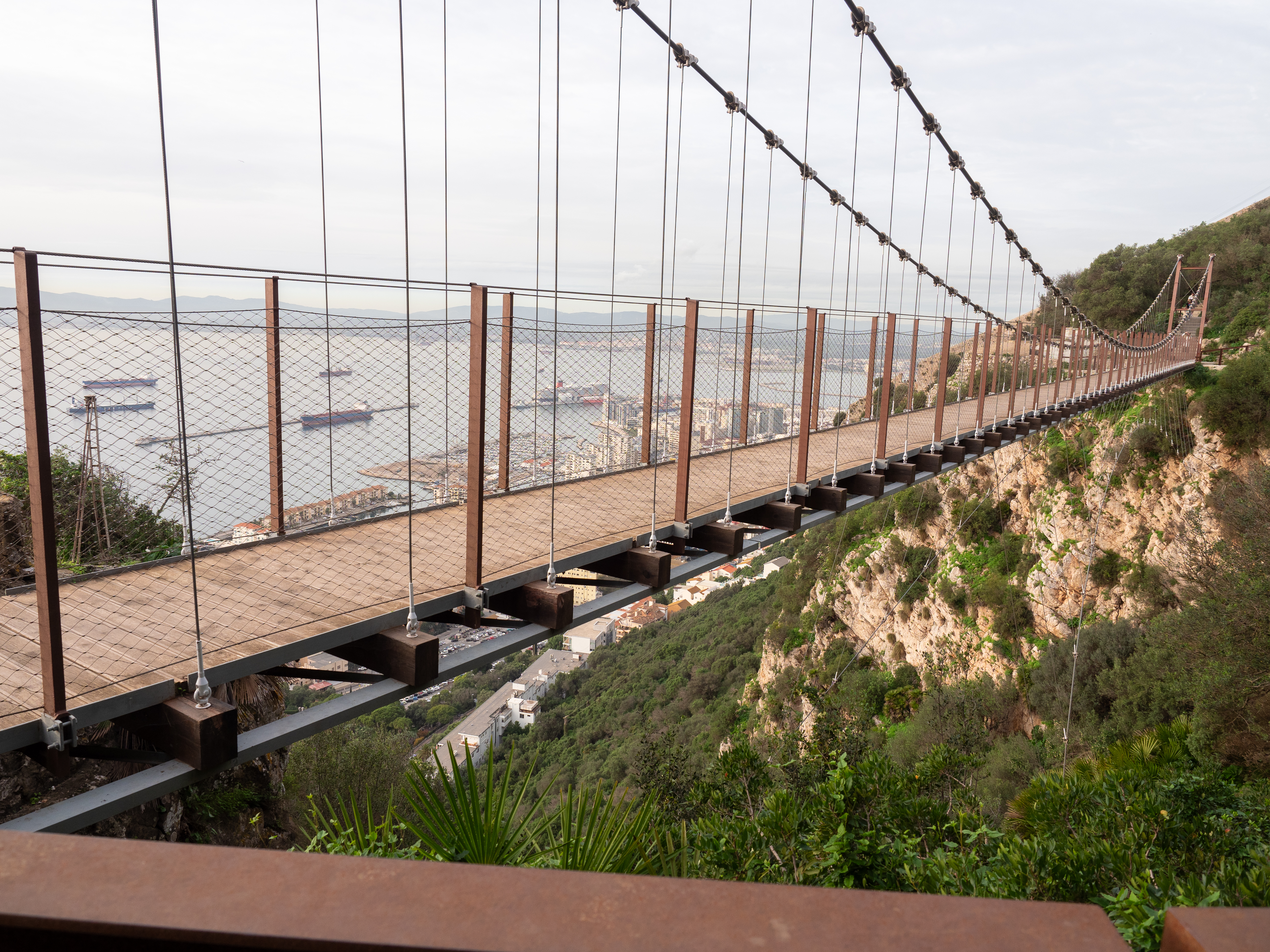
I’d like to mention one operation. Operation “Tracer” was a secret British military operation during World War II, aimed at ensuring Gibraltar could provide intelligence even if it were occupied. They selected six men, including an executive officer, two doctors, and three radio operators, who volunteered to be sealed in a cave with supplies for up to seven years. They set up a ‘Stay Behind Cave,’ but the plan was never implemented, and the cave was closed after the war. The ‘Stay Behind Cave’ remained a rumor until 1997, when a group of Gibraltar cave explorers discovered it. This discovery perfectly shows that the Allies were prepared to take any measures to maintain strategic advantages.
Hidden within the old tunnels lie stories of two remarkable individuals whose legacies shaped history. The first, Henry Shrapnel, was a British artillery officer and inventor, best known for his shrapnel shell. One of his most important achievements was the successful testing of the shrapnel shell in Gibraltar in 1787.
The second was Charles O’Hara, known as ‘Britain’s unluckiest general,’ surrendered to two of Britain’s greatest enemies – George Washington and Napoleon. As the Governor of Gibraltar, he lent his name to O’Hara’s Battery, former defensive equipment installed at the highest point of the mountain. Trully the rock with history.
Another fun attraction is walking across the Windsor Bridge. Quite unplanned, we drove through the tiny Trafalgar Street 4 times. British heritage is everywhere here. And we simply had to try the British phone booths and taste fish & chips. As much as I wanted to, unfortunately we didn’t have time to visit the Union Jack Steps.

And finally one practical note: don’t forget that you need an eSIM in Gibraltar. In case of emergency, the ferry price includes a few hours of internet.

